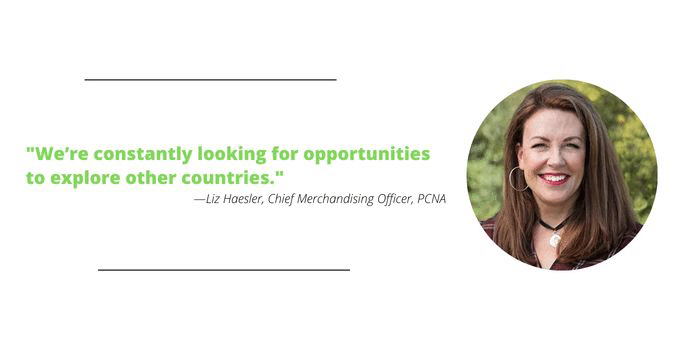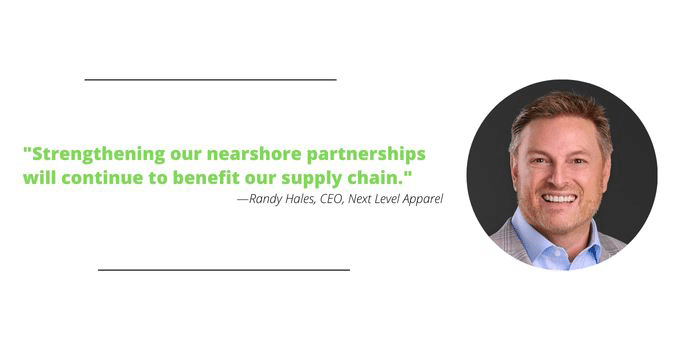(Editor’s Note: Last spring, PPAI Media profiled the promotional products industry’s complicated relationship with China as it neared a crossroads. In a two-part series updating that story, we examine the industry’s progress and continued challenges. Read Part 1, on suppliers’ work to pivot from Chinese cotton sourcing, here.)
American industry is looking for alternatives to China. While China remains a manufacturing powerhouse, obstacles and obstructions in recent years have pushed U.S. businesses to diversify their sourcing. Promo is no exception.
Last week, PPAI Media looked at how industry companies are ensuring the cotton they use is in compliance with the Uyghur Forced Labor Prevention Act (UFLPA), and alternative sourcing for soft goods. But cotton concerns aren’t the only factor driving promotional products businesses’ thinking, and their need for a diversified supply chain doesn’t end there.
Quitting China
Last year, at the 2022 PPAI Product Responsibility Summit, a poll of the industry compliance professionals in attendance found that 83% are looking to move their production out of China. That the sentiment is so strong isn’t surprising, but moving sourcing away from China represents significant challenges.
Businesses’ decision to find alternatives to production in China is driven by a range of issues:
- Tariffs
- Supply chain disruptions
- The country’s rigid COVID lockdowns
- Geopolitical tensions
- Forced labor allegations
However, decades of investment on the part of industry and the Chinese government have built a network of production infrastructure – factories, materials vendors, a skilled workforce, transportation lines and port facilities, etc. – hard to replicate anywhere else in the world.
Laws like the UFLPA and export control rules, which prohibit U.S. companies and engineers from assisting in the production of certain types of semiconductors, place limits on what business can be done in China. But China itself has introduced laws providing for retaliation against companies that comply with these sanctions.
Industry companies sourcing goods from China, which seeks to audit their supply chains or planning exits from the country, all face a complicated, onerous ride.
Isaac Stone Fish, founder and CEO of Strategy Risks, speaking at the 2022 Product Responsibility Summit, warned attendees, “For so long, China was the source for most of your materials. In the medium and long term, that’s likely to be a liability.”
PPAI strives to provide tools to help conduct business ethically and in compliance with available U.S. laws. The Association has conducted a webinar for more help navigating the cotton supply chain; forced labor and other factors to consider are covered in the comprehensive Guide to Responsible Product Sourcing.
- Several of PPAI’s upcoming conferences, including the 2023 North American Leadership Conference and the 2023 Product Responsibility Summit, will examine issues around responsible sourcing and importing goods from China.
Making The Move
The exodus from China has been one of measured progress for most companies in the promotional merchandise field. It has also not been a uniform progression across product categories, as production alternatives for some goods may be more readily available than others.
Approximately 53% of Clearwater, Florida-headquartered Koozie Group’s total production expenditures are in Asia, although the company is making progress in reducing its reliance on China.
“Of the spend in Asia, 90% of it is still coming from China. In 2016-2017, it was 97%,” says Pierre Montaubin, senior vice president of product management and sourcing at Koozie Group. “We have moved some production from China to Vietnam, Bangladesh and India over the past few years. We have looked at Mexico as an alternative source, but there is still a big price gap between Mexico and China despite the cheaper freight.”

Kensington, Pennsylvania-based Polyconcept North America launched its ProudPath program in April 2022. The program is designed to help distributors navigate social and environmental responsibilities and equip them to be leaders on the issues. It also factors into the company’s sourcing decisions.
“We’re constantly looking for opportunities to explore other countries, and this is not just because of what happened in China with cotton,” says Liz Haesler, Polyconcept North America’s chief merchandising officer. “A lot of it is really trying to diversify, but also it’s because of ProudPath.”
At present, PCNA does not source any apparel in China and has moved 90% of its cotton sourcing out of the country. For the remaining 10% and the hard goods it continues to procure in the country, PCNA has a team of 80 people in China it uses to evaluate the vendors it works with.
“We have chain of custody paperwork for all the shipments,” says Haesler. “We have an office in China, and they actually go and do inspections and make sure that the factory code of conduct that they have signed is being followed so that we are responsibly sourcing.”
PCNA has overcome some significant recent stumbling blocks in its China strategy. Haesler says, “We have had a strategy in place to source more outside of mainland China for several years, but then COVID hit. What happened for us was that the factories we have been working with in India, Bangladesh and Myanmar shut down. That waylaid our strategy, and we had to go back to China, although not for cotton.”
The company is also exploring alternatives for certain hard goods categories that currently come primarily out of China.
“The piece of it that will continue to be a big problem for us, or opportunity, to be honest with you, is drinkware, which is an $8 billion industry, and it’s all coming out of China,” Haesler says. “Tech is another area where almost the whole industry is located in China. We have moved cables and some things to Vietnam. Also, some of the drinkware factories we work with are exploring U.S. production, as well as opening a factory in Mexico.”
Close To Home
As China’s appeal as a source of production wanes, an alternative showing some promise for importers in the promo industry is to bring their bases of manufacturing closer to the U.S. border. Nearshoring production – sometimes referred to as “friendshoring” – has been behind several promo companies’ decisions to establish facilities in Mexico and Latin America.

Examples of promo industry nearshore production include:
- Augusta Sportswear – headquartered in Augusta, Georgia – has production facilities in Champoton, Mexico; MAC Specialties in Oceanside, New York, has a manufacturing facility in Monterey, Mexico; and Proinnovative, of Phoenix, has an operation in Mexico under the maquiladora framework – a common legal entity that allows U.S. companies to regularly export U.S.-made raw materials, duty-free, and import the more finished products duty-free.
- Next Level Apparel, a Torrance, California-based supplier, recently announced a partnership with textile manufacturer Grupo M, based in the Dominican Republic, to move its production closer to the North American market.
“We recently announced partnerships with GK Global and Grupo M as part of our move towards sourcing 100% U.S. cotton for our entire apparel line,” says Randy Hales, CEO of Next Level Apparel. “Nearshore fabric supply has not fully aligned with the current demand. We will continue to support our nearshore partners and grow alongside them as we work to bring our fabric production closer to home. Strengthening our nearshore partnerships will continue to benefit our supply chain.”
The push to nearshore production has also factored into some of the recent large business moves in the promotional products industry.
At The PPAI Expo 2023, Boston-based supplier HPG announced that it had acquired fellow supplier Evans Manufacturing, based in Garden Grove, California. HPG CEO Chris Anderson highlighted Evans’ operations in Mexico as a factor in HPG’s decision-making behind the acquisition.
- HPG’s strategic initiatives include nearshoring as much of its production as possible. Partnering with Evans allows HPG access to its unique Mexico operations.


